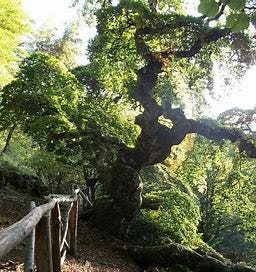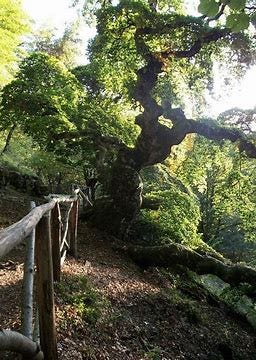"It's amazing what these four little needles can do." So said my acupuncture teacher's teacher, a Korean Buddhist monk and itinerant practitioner of East Asian medicine.
In his lineage of acupuncture, called Sa’am, the monks rely on those little needles (or not so little, as some patients will tell you) both to relieve suffering in others in fulfillment of their monastic vows, and to relieve it in themselves as well. After all, when monastic robes prove inadequate against winter’s chill, those four little needles can supplement the Heart and stoke the body’s core vitality. When the begging bowl fails to fill, those four little needles can supplement the Spleen, organ of nourishment and satiation—and while man can’t live on needles alone, those four little needles can sure help take the sting out of an empty belly. At day’s end, those four little needles can adjust and enhance physiology in a number of ingenious ways.
I’m someone who didn’t always pay much mind to this stuff, or even give it a second thought, but who now relies on it (much as those monks do) on a several-times-a-week basis. As such, I’m a bit fixated on helping others appreciate this curious, idiosyncratic healing art called acupuncture.
From the outside, it’s a practice that can seem uninviting at best (who wants to get stuck with a pin?), and also strangely impenetrable. ‘How does it work?’ is a question on every patient’s lips. What’s the meaning of all those points and meridians (or channels, as they’re more commonly known these days) criss-crossing the body like so many back roads? It can all seem esoteric to say the least, and answers to these questions are not easy to condense into a quick sound byte.
The way acupuncture is sometimes talked about—and sometimes taught—doesn’t necessarily help matters. As a beginning student, I remember being notably turned off by lists of points and their indications: a tired, seemingly endless litany of this point for that condition, without apparent rhyme or reason. No doubt some of it worked, I thought, but without knowing why, there was no poetry to the subject.
That ‘why’ turns out to be as strange and wonderful as anything I could have hoped for. For acupuncture is but one fruit of a magnificent, deep-rooted tree, one that spans philosophy, literature and scientific enquiry. Among its branches can be found music, religion, and every classical subject under the sun. And while all its flowers and fruits have virtue, in the end it’s the tree itself that’s worthy of veneration.
Its roots, sunk deep in the earth of matter.
Its crown, kissing the heavens, mingling with the stars above.
Its sturdy trunk, spanning the realms and joining them.
Its vital sap, enlivening every leaf, every cell.
Tree of life, Tree of knowledge, World Tree.
As far as I can tell, every traditional culture from the Dogon to the Cherokee has some version of the tree—differing in details, to be sure, but consistent in embodying an integrated vision of the world and a wise perspective on the human place within it.
In our age (which is to say, deep in the Kali Yuga), many of those trees of wisdom have withered or been chopped down. The ones that stand tall still—in the face of materialism undermining their root systems and the forces of capital seeking to strip their bark for profit—those who stand must be considered sacred.
There’s no guarantee the last few old-growth wisdom traditions will survive the coming times intact. Sentinels may fall amidst the turbulence of the next decades and centuries. Yet the trees take the long view. They know that every part of themselves contains the whole; every seed contains the tree.
The seed called acupuncture is no exception: encoded in its odd channel pathways and point names is in intricately woven structure, a beautiful worldview for which its potentially profound clinical results are the evidence.
In this understanding, the body is akin to an ecosystem, complete with rivers and oceans, mountains and fiery zones. Under stress, this dynamic landscape can slip out of harmony: perhaps a prolonged dry spell leads to a raging wildfire; perhaps a clear cut forest leads to erosion that silts up of a waterway. Each of these possibilities has correlates in the inner landscape of the body—the wildfires might be hot flashes, the silted waterway hyperglycemia. For just like the natural world at large, our inner harmony depends on a complex set of checks and balances, well described by the Five Element theory that mirrors nature’s dynamic processes.
The details of this study are wonderfully intricate, but the broad strokes are simple enough. We need to be nicely warm (not hot or cold); moist (not parched or soggy), full (not bloated or empty). We need movement, but not too much. Consolidation, but not stagnation. And so on.
In Sa’am acupuncture, we work with six main pairs of qualities, each of which can be adjusted to either side, tuned up or down like guitar strings. If this sounds deceptively simple, well, it is a bit oversimplified—for tuning one string affects everything else, and anyway, the human instrument lends itself to more than one tuning (not to mention the differences of individual constitution, among other variables.)
As my teacher likes to say, clinic is hard.
The tree doesn’t yield its secrets casually. Each oily kernel is encased in a tough rind that takes patience and care to crack.
For my part, I take heart in the resilient potency of every little seed. So tenacious, so intelligent, so full of life.
And I give thanks for these four little needles and all they can do in the hands of one who honors the tree in whose shade and rich litter they stand.



